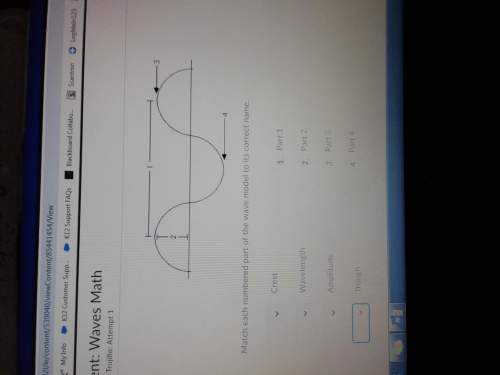
Physics, 26.10.2020 23:00 zoeedadoll
Cyclist A, who has constant speed 4.0 m s−1, overtakes cyclist B, who is stationary, at time t=0.
2.0 seconds later, cyclist B begins to accelerate uniformly at 1.0 m s−2.
Calculate the time at which cyclist B overtakes cyclist A.
Give your answer to an appropriate number of significant figures.

Answers: 3


Other questions on the subject: Physics

Physics, 22.06.2019 03:00, iyanistacks50
Lymphocytes known as blastocysts make antibodies that fight infection. select the best answer from the choices provided t f
Answers: 2

Physics, 22.06.2019 08:00, JuanTorres7
The arrival of in the early days of europa’s existence could have formed its ocean. it is likely that the water experienced similar to earth. it is also possible that this water is retained beneath europa’s surface and in its atmosphere due to europa’s . 1.) a. precipitation b. water vapor c. icy debris 2.) a. gravitational compression b. biochemical cycling c. radiogenic heating 3.) a, gravity b. magnetic field c. heat energy for plato
Answers: 3

Physics, 22.06.2019 11:00, MoogleCaliS
How do we measure or think of speed in the united states?
Answers: 1

Physics, 22.06.2019 12:30, lanaasad7733
An ice-making machine inside a refrigerator operates in a carnot cycle. it takes heat from liquid water at 0.0 degrees celsius and rejects heat to a room at a temperature of 19.2 degrees celsius. suppose that liquid water with a mass of 76.3kg at 0.0 degrees celsius is converted to ice at the same temperature. take the heat of fusion for water to be l_f = 3.34*10^5 j/kg. how much energy e must be supplied to the device? express your answer in joules.
Answers: 1
You know the right answer?
Cyclist A, who has constant speed 4.0 m s−1, overtakes cyclist B, who is stationary, at time t=0.
2...
Questions in other subjects:








Social Studies, 03.12.2019 22:31

History, 03.12.2019 22:31

English, 03.12.2019 22:31




